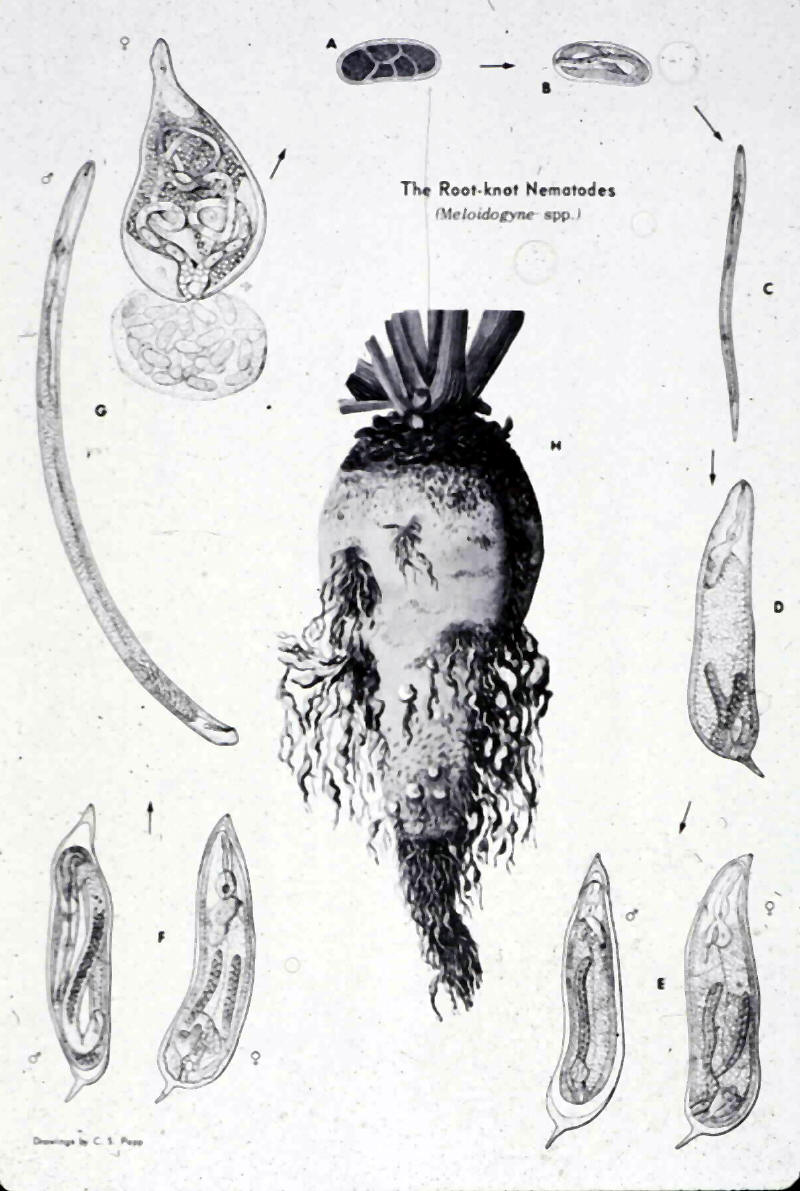Meloidogyne spp.: root-knot nematodes
Meloidogyne spp.: root-knot nematodes
Meloidogyne spp.: root-knot nematodes
Meloidogyne spp.: root-knot nematodes
Meloidogyne spp.: root-knot nematodes
Meloidogyne spp.: root-knot nematodes
Meloidogyne spp.: root-knot nematodes
Meloidogyne spp.: root-knot nematodes
Meloidogyne spp.: root-knot nematodes
Meloidogyne arenaria: root-knot nematodes
Meloidogyne spp.: root-knot nematodes
Meloidogyne incognita
Meloidogyne javanica
Meloidogyne hapla
Meloidogyne arenaria
Meloidogyne spp.: root-knot nematodes
Meloidogyne incognita
Meloidogyne incognita
Meloidogyne chitwoodi
Meloidogyne chitwoodi
Meloidogyne incognita
Meloidogyne incognita
Meloidogyne spp:
Meloidogyne hapla
Meloidogyne incognita
Meloidogyne incognita
Meloidogyne incognita
Meloidogyne incognita
Meloidogyne incognita / Fusarium oxysporum
Meloidogyne javanica
Meloidogyne javanica
Meloidogyne chitwoodi
Meloidogyne chitwoodi
Meloidogyne incognita
Tobacco, Meloidogyne incognita
Meloidogyne incognita, Tobacco
Meloidogyne incognita, Tobacco
Life cycle
Stages of embryogenesis and egg development.
J2 infective stage aggregated behind root tip.
Mass invasion of J2. Movement is towards root tip followed by a turn into undifferentiated vascular tissues where feeding site will be initiated.
Development stages from infective J2 (left) to young female (right).
J2 swelling after initiating feeding site and commencing to feed.
Male coiled in cuticle of J4.
Female embedded in gall and feeding from giant cell system; egg mass at root surface.
Dichondra root cross section: giant cell feeding sites.
Tomat root cross section: giant cells.
Female on pinhead: size contrast.
Perineal pattern
Perineal pattern
Perineal pattern
Perineal pattern
Biochemical identification: esterase patterns.
Galling symptoms, tomato root.
Tomato roots: galls and egg massses stained with Phloxine B.
Potato tubers: unblemished (left), blemished (right), California.
Potato tuber damage, California.
Damage to sugarbeets, California.
Splitting of sweetpotato tubers and secondary infection.
Damage to carrots from destruction of root tip meristems, California.
Lettuce, Oregon: note secondary roots emerging from galls.
Cantaloupe, Georgia: From chemical treatment plot, left; from untreated control plot, right.
Damage to soybean roots (right), resistant variety (left).
Cotton, California: characteristically small galls on roots.
Roots from nematicide trial, North Carolina.
Cotton, California: Nematicide-treated (left), untreated control (right).
Tobacco, Zimbabwe. Benefit of nematicide treatment after one year of non-host rotation.
Tobacco, Zimbabwe. No benefit of nematicide treatment after four years of non-host rotation.
Potato, California: management tactics.
Potato, California: designing management strategies appropriate to the level of infestation.
Expression of ion-chaneling gene in normal tobacco plants (left), transgenic plants with complete gene promoter region (center) and with only the nematode-sensitive region of the promoter (right). Conklin and Opperman, 1994.
Subsections of promoter region of ion-chaneling gene. Conklin and Opperman, 1994.
Nematode-sensitive region of the promoter of ion chaneling gene attached to a GUS gene and expressed in nematode feeding site with blue coloration. Conklin and Opperman, 1994.
Nematode-sensitive region of the promoter of ion chaneling gene attached to a GUS gene and expressed in giant cell with blue coloration. Conklin and Opperman, 1994.




































 .
.
|

Meloidogyne spp.: root-knot nematodes
Life cycle